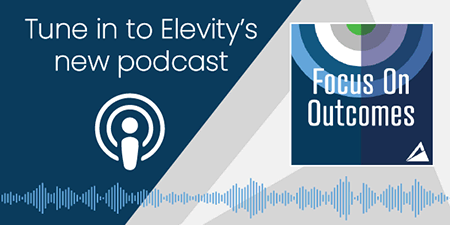Cybercriminals aren’t just getting smarter—they’re getting automated. As artificial intelligence (AI) becomes part of everyday business operations, it’s also changing the way attacks happen. Traditional threats are still out there, but AI-driven attacks introduce new risks that are faster, smarter and harder to predict.
In this article, we’ll explore what makes AI-powered threats different from the ones you’ve seen before, why they matter for your business and how you can strengthen your defenses. You’ll also learn practical strategies for managing cyber risk in a world where attacks can think for themselves—and how Elevity helps organizations stay one step ahead.
RELATED: How Long Does it Take to Detect a Cyberattack?
How Do AI Attacks Differ from Traditional Cybersecurity Threats?
When it comes to cyberattacks, not all threats are created equal. Traditional cybersecurity threats are human-driven—think phishing emails designed to trick employees, social engineering schemes that prey on trust and malware crafted by people with malicious intent. These attacks often follow predictable patterns and rely on exploiting known vulnerabilities.
AI-driven attacks, on the other hand, are a whole new ballgame. They’re autonomous and adaptive, meaning AI can launch automated attacks at scale without human oversight. These attacks learn and evolve in real time, making them faster, more complex and harder to stop. Instead of waiting for a hacker to write the next piece of malware, AI can generate new tactics on the fly—turning cybersecurity into a race against machines.
Are We Fighting the Same Old Threats—or Something Smarter?
Traditional cyberattacks tend to follow a familiar playbook. Hackers often reuse known exploits, target common vulnerabilities and rely on tried-and-true methods. These attacks are relatively predictable—like reruns of the same old crime drama. Security teams can often spot the patterns and respond with patches, updates and training.
AI-driven threats, though? They’re a whole different genre.
AI attacks are faster, smarter and constantly evolving. Instead of relying on known exploits, attackers can use techniques like data poisoning—manipulating the training data that feeds AI models to corrupt their behavior. Or they might engage in model exploitation, reverse-engineering AI systems to uncover hidden weaknesses.
However, what makes AI threats especially dangerous is their speed and complexity. These attacks can adapt in real time, outpacing traditional defenses and making it harder for IT teams to keep up. It’s like playing chess against a computer that learns your strategy with every move.
How Can I Manage Cyber Risk in an AI-Powered World?
Defending against cyberthreats has always been a game of cat and mouse. With traditional threats, businesses rely on reactive defenses—patching systems, updating antivirus software and monitoring networks after an attack is detected. These defenses focus on the perimeter and endpoints, using tools like firewalls and intrusion detection systems to keep bad actors out.
But the landscape is changing fast. As AI-generated threats become more sophisticated, businesses need to level up their risk management strategies. That means shifting from reactive to proactive.
Here’s how smart organizations are defending against AI-powered attacks:
- AI vs. AI: Using machine learning to detect anomalies and respond to threats in real time.
- Zero Trust Architecture: No one—inside or outside the network—is automatically trusted. Every access request is verified.
- Continuous Monitoring: Real-time visibility into systems helps catch threats before they escalate.
- Threat Intelligence Platforms: These tools analyze global threat data to predict and prevent AI-driven attacks.
- Employee Training: Even with AI in play, human error is still a risk. Ongoing education helps teams spot suspicious activity.
Can AI Create New Cybersecurity Risks All on its Own?
Surprisingly, yes—and it’s not just about rogue algorithms or sci-fi scenarios. Poorly trained AI systems can make flawed decisions that open the door to new vulnerabilities. These aren’t your typical bugs or glitches. We’re talking about ethical and bias risks baked into the AI itself.
For example, if an AI model is trained on biased or incomplete data, it might misidentify threats, ignore certain attack patterns or even lock out legitimate users. That’s a big problem when AI is making real-time security decisions. Instead of strengthening your defenses, it could unintentionally weaken them.
This new wrinkle in cybersecurity means businesses need to be just as careful about how AI is trained as they are about what it’s protecting. Because when AI gets it wrong, the consequences can be just as damaging as a traditional breach—if not worse.
How Can I Protect My Business From Attacks That Think for Themselves?
Cyberthreats are evolving—and fast. Whether it’s a classic phishing scam or an AI-powered attack that adapts on the fly, your business needs more than just basic protection. You need a proactive, layered approach to cybersecurity that keeps pace with today’s risks. That’s exactly what Elevity delivers.
Ready to find out where your vulnerabilities lie and how to fix them? Take our free Cybersecurity Risk Assessment and you’ll be on your way toward smarter, stronger security.










%20cropped.jpg?width=200&height=200&name=Peter_Niebler%20(Pro)%20cropped.jpg)




